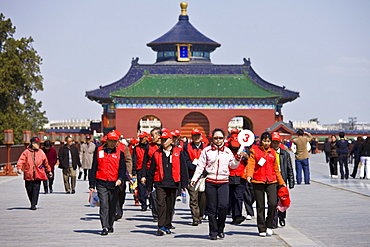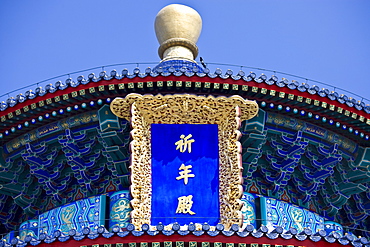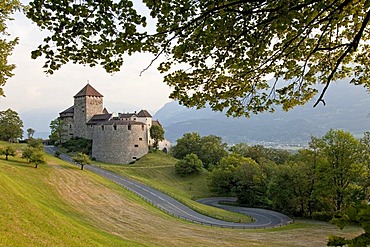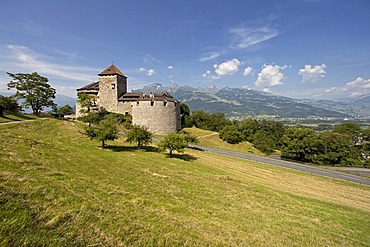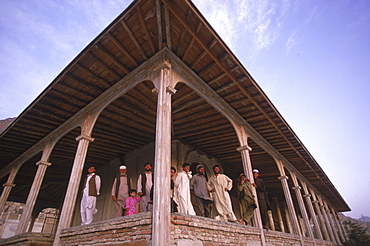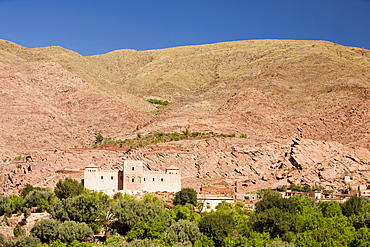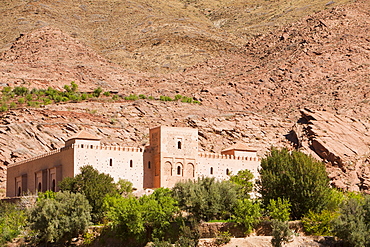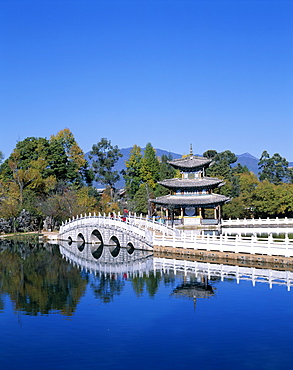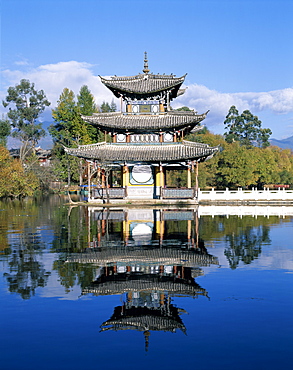Recent searches
Loading...
1161-3716 - Detail of Hall of Prayer for Good Harvest, Qinian Dian, at the Ming Dynasty Temple of Heaven, Beijing, China
1161-3359 - Terracotta animal figures at the Han Dynasty Tomb of Han Yang Ling, Xian, China
1161-3715 - Hall of Prayer for Good Harvest, Qinian Dian, at the Ming Dynasty Temple of Heaven, Beijing, China
1161-3754 - Tourists at the Ming Dynasty Temple of Heaven, Beijing, China
1161-3174 - Qing Dynasty cabinet with engraved dragons and clouds design on display in the Shanghai Museum, China
1161-3157 - Bronze Han Dynasty cowrie container with yaks decorations, on display in the Shanghai Museum, China
1161-3156 - Zhong Dynasty bell on display in the Shanghai Museum, China
1161-3714 - Hall of Prayer for Good Harvest, Qinian Dian, at the Ming Dynasty Temple of Heaven, Beijing, China
1161-3360 - Terracotta animal figures, including piglets and sheep, at the Han Dynasty Tomb of Han Yang Ling, Xian, China
832-157788 - City view with residential towers and dynasty towers of San Gimignano, UNESCO World Heritage Site, Tuscany, Italy, Europe
832-157795 - Old town with residential tower and dynasty tower of San Gimignano, UNESCO World Heritage Site, Tuscany, Italy, Europe
832-157787 - City view with residential towers and dynasty towers of San Gimignano, UNESCO World Heritage Site, Tuscany, Italy, Europe
832-157822 - Residential towers and dynasty towers of San Gimignano, UNESCO World Heritage Site, Tuscany, Italy, Europe
832-157786 - City view with residential towers and dynasty towers of San Gimignano, UNESCO World Heritage Site, Tuscany, Italy, Europe
832-157823 - Residential towers and dynasty towers of San Gimignano, UNESCO World Heritage Site, Tuscany, Italy, Europe
832-137680 - Vaduz Castle, residence of the dynasty and landmark of the capital Vaduz, Principality of Liechtenstein, Europe
832-137672 - Vaduz Castle, residence of the dynasty and landmark of the capital Vaduz, Principality of Liechtenstein, Europe
832-137673 - Vaduz Castle, residence of the dynasty and landmark of the capital Vaduz, Principality of Liechtenstein, Europe
832-137676 - Vaduz Castle, residence of the dynasty and landmark of the capital Vaduz, Principality of Liechtenstein, Europe
832-137670 - Vaduz Castle, residence of the dynasty and landmark of the capital Vaduz, Principality of Liechtenstein, Europe
832-137677 - Vaduz Castle, residence of the dynasty and landmark of the capital Vaduz, Principality of Liechtenstein, Europe
832-137674 - Vaduz Castle at dusk, residence of the dynasty and landmark of the capital Vaduz, Principality of Liechtenstein, Europe
832-132500 - Dynasty tower, San Gimignano, Tuscany, Italy, Europe
832-132503 - Dynasty tower in the medieval city center, San Gimignano, Tuscany, Italy, Europe
832-132508 - Dynasty towers in the medieval city center, San Gimignano, Tuscany, Italy, Europe
832-132505 - Dynasty towers in the medieval city center, San Gimignano, Tuscany, Italy, Europe
832-132502 - Dynasty tower in the medieval city center, San Gimignano, Tuscany, Italy, Europe
832-106418 - Castle, residence, ancient seat of the Wittelsbach dynasty, Alter Hof, historic centre, Munich, Upper Bavaria, Germany, Europe
832-76336 - Stupas of Sanchi, UNESCO World Heritage site, built by King Ashoka, Mauryan dynasty, Sanchi, Vidisha in Madhya Pradesh, North India, India, Asia
832-76357 - Stupas of Sanchi, a UNESCO World Heritage site, built by King Ashoka, Mauryan dynasty, Sanchi, near Vidisha, Madhya Pradesh, northern India, India, Asia
832-76354 - Stupas of Sanchi, a UNESCO World Heritage site, built by King Ashoka, Mauryan dynasty, Sanchi, near Vidisha, Madhya Pradesh, northern India, India, Asia
832-76341 - Stupas of Sanchi, UNESCO World Heritage site, built by King Ashoka, Mauryan dynasty, Sanchi, Vidisha in Madhya Pradesh, North India, India, Asia
832-76338 - Stupas of Sanchi, UNESCO World Heritage site, built by King Ashoka, Mauryan dynasty, Sanchi, Vidisha in Madhya Pradesh, North India, India, Asia
832-86632 - Statue in the park, Schlosspark, grounds of Schloss Nymphenburg Palace, summer residence of the Wittelsbach dynasty, Munich, Upper Bavaria, Germany, Europe
832-76352 - Stupas of Sanchi, UNESCO World Heritage site, built by King Ashoka, Mauryan dynasty, Sanchi, Vidisha in Madhya Pradesh, North India, India, Asia
832-76356 - Stupas of Sanchi, a UNESCO World Heritage site, built by King Ashoka, Mauryan dynasty, Sanchi, near Vidisha, Madhya Pradesh, northern India, India, Asia
832-76331 - Stupas of Sanchi, UNESCO World Heritage site, built by King Ashoka, Mauryan dynasty, Sanchi, Vidisha in Madhya Pradesh, North India, India, Asia
832-76334 - Stupas of Sanchi, UNESCO World Heritage site, built by King Ashoka, Mauryan dynasty, Sanchi, Vidisha in Madhya Pradesh, North India, India, Asia
832-76342 - Buddhist symbols, Shrivatsa in Triratana over the chakra wheel on Torana, stupas of Sanchi, UNESCO World Heritage site, built by King Ashoka, Mauryan dynasty, Sanchi, Vidisha in Madhya Pradesh, North India, India, Asia
832-76351 - Stupas of Sanchi, UNESCO World Heritage site, built by King Ashoka, Mauryan dynasty, Sanchi, Vidisha in Madhya Pradesh, North India, India, Asia
832-86615 - Aerial view, Schloss Reisensburg castle, Luitpoldinger dynasty, Danube river, Gundremmingen nuclear power plant, Reisensburg, Swabia, Bavaria, Germany, Europe
832-76340 - Buddhist symbols, Shrivatsa in Triratana over the chakra wheel on Torana, stupas of Sanchi, UNESCO World Heritage site, built by King Ashoka, Mauryan dynasty, Sanchi, Vidisha in Madhya Pradesh, North India, India, Asia
832-76335 - Stupas of Sanchi, UNESCO World Heritage site, built by King Ashoka, Mauryan dynasty, Sanchi, Vidisha in Madhya Pradesh, North India, India, Asia
832-76339 - Stupas of Sanchi, UNESCO World Heritage site, built by King Ashoka, Mauryan dynasty, Sanchi, Vidisha in Madhya Pradesh, North India, India, Asia
832-76348 - Stupas of Sanchi, UNESCO World Heritage site, built by King Ashoka, Mauryan dynasty, Sanchi, Vidisha in Madhya Pradesh, North India, India, Asia
832-76345 - Stupas of Sanchi, UNESCO World Heritage site, built by King Ashoka, Mauryan dynasty, Sanchi, Vidisha in Madhya Pradesh, North India, India, Asia
832-76332 - Stupas of Sanchi, UNESCO World Heritage site, built by King Ashoka, Mauryan dynasty, Sanchi, Vidisha in Madhya Pradesh, North India, India, Asia
832-76330 - Stupas of Sanchi, UNESCO World Heritage site, built by King Ashoka, Mauryan dynasty, Sanchi, Vidisha in Madhya Pradesh, North India, India, Asia
832-65994 - Buddhism, seated Buddha figure in the pagoda of Htilominlo Temple from the 13th Century, one of the last great temples built before the fall of the Bagan Dynasty, Old Bagan, Pagan, Burma, Myanmar, Southeast Asia, Asia
832-65991 - Buddhism, gilded seated Buddha figure in the pagoda of Htilominlo Temple from the 13th Century, one of the last great temples built before the fall of the Bagan Dynasty, Old Bagan, Pagan, Burma, Myanmar, Southeast Asia, Asia
832-55665 - Women wearing colorful saris, marble tomb of the Scindia dynasty, Shivpuri, Madhya Pradesh, northern India, India, Asia
1113-71723 - Copper Palace, Xian Tong Temple, Mount Wutai, oldest monastery in Wutai Shan, Ming dynasty, Five Terrace Mountain, Buddhist Zentrum, town of Taihuai, Shanxi province, China
1113-68207 - Yu Garden, Souvenir shop, Yu Yuan Garden, Ming Dynasty, Nanshi
1113-33219 - Temple of father of the dynasty, Hung Mieu in the citadel, Hoang Thanh, Hue, Vietnam
1113-16582 - Exhibited object at Shanghai Museum, earthen figure of a women, from the Tang Dynasty, EXPO 2010 Shanghai, Shanghai, China, Asia
857-48303 - Great wall of China from Jinshanling to Simatai. Hebei Province. China
857-33973 - Men and boys on bikes ride past a towering, ancient minaret, outside of Ghazni, Afghanistan, October 1, 2002. Made of brick decorated with Kufic and Naksh Script and floral motifs, the minaret dates back to the early 12th century and was built by Sultan Masud III of the Ghaznavid Dynasty, who ruled over an empire encompassing much of Afghanistan, Northern India, Persia and Central Asia. The minaret was once three times as tall as its current 70 feet, and is thought to have been part of a large mosque complex. Now an important truck stop on the road to Kandahar, Ghazni, located on the Lora River at the elevation of 2,225 meters, is the capital of Ghazni province and is a market for sheep, wool, camel hair cloth, corn, and fruit-it also continues to be a haven for Taliban insurgents.
857-34008 - Workers pause by the columns of a 19th century summer pavilion in the Babur Gardens, or Bagh-i-Babur, Kabul, Afghanistan, September 25, 2002. The pavilion, which was used as a restaurant in the 20th century, was built by Amir Abdur Rahman, but was heavily damaged by the factional fighting of the mujihadeen in the 1990's and later by the Taliban. The buildings and gardens are now being carefully restored. Shah Babur, a descendent of Ghengis Khan and grandson of Tamerlane, is credited for founding the great Moghul dynasty which ruled India for two centuries. Babur built the palace and created the gardens on a hill looking over the southern part of Kabul in the 16th century,
857-33971 - Afghan men pause on the road with an ancient brick minaret and many shrines in the background, outside of Ghazni, Afghanistan, October 1, 2002. Made of brick decorated with Kufic and Naksh Script and floral motifs, the minaret dates back to the early 12th century and was built by Sultan Masud III of the Ghaznavid Dynasty, who ruled over an empire encompassing much of Afghanistan, Northern India, Persia and Central Asia. The minaret was once three times as tall as its current 70 feet, and is thought to have been part of a large mosque complex. Now an important truck stop on the road to Kandahar, Ghazni, located on the Lora River at the elevation of 2,225 meters, is the capital of Ghazni province with a population of 35,900, and is a market for sheep, wool, camel hair cloth, corn, and fruit, and continues to be a haven for Taliban insurgents.
857-33969 - Men on bikes ride past an ancient brick minaret toward the old walls and citadel of the town of Ghazni, Afghanistan, October 1, 2002. Made of brick decorated with Kufic and Naksh Script and floral motifs, the minaret dates back to the early 12th century and was built by Sultan Masud III of the Ghaznavid Dynasty, who ruled over an empire encompassing much of Afghanistan, Northern India, Persia and Central Asia. The minaret was once three times as tall as its current 70 feet, and is thought to have been part of a large mosque complex. Now an important truck stop on the road to Kandahar, Ghazni, located on the Lora River at the elevation of 2,225 meters, is the capital of Ghazni province with a population of 35,900, and is a market for sheep, wool, camel hair cloth, corn, and fruit.
911-8070 - The Tin Mal mosque, built in 1156 in Tin Mal (Tinmel), centre of the Almohad dynasty, in the Atlas mountains of Morocco, North Africa. Africa
911-8069 - The Tin Mal mosque, built in 1156 in Tin Mal (Tinmel), centre of the Almohad dynasty, in the Atlas mountains of Morocco, North Africa. Africa
911-8068 - The Tin Mal mosque, built in 1156 in Tin Mal (Tinmel), centre of the Almohad dynasty, in the Atlas mountains of Morocco, North Africa. Africa
841-703 - Colossi of Memnon, carved to represent the 18th dynasty pharaoh Amenhotep III, West Bank of the River Nile, Thebes, UNESCO World Heritage Site, Egypt, North Africa, Africa
841-690 - Colossi of Memnon, carved to represent the 18th dynasty pharaoh Amenhotep III, West Bank of the River Nile, Thebes, UNESCO World Heritage Site, Egypt, North Africa, Africa
841-691 - Colossi of Memnon, carved to represent the 18th dynasty pharaoh Amenhotep III, West Bank of the River Nile, Thebes, UNESCO World Heritage Site, Egypt, North Africa, Africa
834-874 - Palace Museum, Forbidden City, Ming and Qing Dynasty, UNESCO World Heritage Site, Beijing, China, Asia
834-1292 - Longmen Buddhist Caves, Ancestor Worshipping Temple dating from the Tang Dynasty, UNESCO World Heritage Site, Luoyang, Henan Province, China, Asia
834-887 - Temple of Heaven dating from the Ming Dynasty, at dawn, UNESCO World Heritage Site, Beijing, China, Asia
834-1371 - Black Dragon Pool Park, Deyue Pavilion, pagoda dating from the Ming Dynasty, Lijiang, UNESCO World Heritage Site, Yunnan Province, China, Asia
834-1368 - Deyue Pavilion, Ming Dynasty pagoda, Black Dragon Pool Park, Lijiang, UNESCO World Heritage Site, Yunnan Province, China, Asia
834-1377 - Mu Family Mansion and ancient rooftops of Old Town dating from the Ming Dynasty, UNESCO World Heritage Site, Lijiang, Yunnan Province, China, Asia
834-1241 - Night view of the Bell Tower dating from the Qing Dynasty, city centre of Xian, Shaanxi Province, China, Asia
834-1306 - Buddha statue, Binyang Caves, Longmen Buddhist Caves dating from the Tang Dynasty, UNESCO World Heritage Site, Luoyang, Henan Province, China, Asia
834-1199 - Terracotta Warriors, Terracotta Army, life sized warriors and horses dating from the Qin Dynasty, UNESCO World Heritage Site, Xian, Shaanxi Province, China, Asia
834-1288 - Ancestor Worshipping Temple dating from the Tang Dynasty, Longmen Buddhist Caves, UNESCO World Heritage Site, Luoyang, Henan Province, China, Asia
834-1373 - Black Dragon Pool Park, Deyue Pavilion, pagoda dating from the Ming Dynasty, Lijiang, UNESCO World Heritage Site, Yunnan Province, China, Asia
834-1212 - Terracotta Warriors, Terracotta Army, life sized warriors in battle formation, dating from the Qin Dynasty, UNESCO World Heritage Site, Xian, Shaanxi Province, China, Asia
834-1203 - Terracotta Warriors, Terracotta Army, life sized warriors in battle formation, dating from the Qin Dynasty, UNESCO World Heritage Site, Xian, Shaanxi Province, China, Asia
834-1215 - Terracotta Warriors, Terracotta Army, life sized warriors in battle formation, dating from the Qin Dynasty, UNESCO World Heritage Site, Xian, Shaanxi Province, China, Asia
834-1304 - Longmen Buddhist Caves, Ancestor Worshipping Temple dating from the Tang Dynasty, UNESCO World Heritage Site, Luoyang, Henan Province, China, Asia
834-1236 - Night view of the Bell Tower, Qing Dynasty, city centre, Xian, Shaanxi Province, China, Asia
834-1364 - Black Dragon Pool Park, Deyue Pavilion, pagoda from the Ming Dynasty, Lijiang, UNESCO World Heritage Site, Yunnan Province, China, Asia
834-1301 - Longmen Buddhist Caves, Ancestor Worshipping Temple dating from the Tang Dynasty, UNESCO World Heritage Site, Luoyang, Henan Province, China, Asia
834-1340 - Bodhisattva and Guardian statues, Longmen Buddhist Caves, Ancestor Worshipping Temple dating from the Tang Dynasty, UNESCO World Heritage Site, Luoyang, Henan Province, China, Asia
834-1380 - Mu Family Mansion, Ming Dynasty, Old Town, UNESCO World Heritage Site, Lijiang, Yunnan Province, China, Asia
834-1367 - Deyue Pavilion, Ming Dynasty pagoda, Black Dragon Pool Park, Lijiang, UNESCO World Heritage Site, Yunnan Province, China, Asia
834-1321 - Bodhisattva and Guardian statues, Longmen Buddhist Caves, Ancestor Worshipping Temple dating from the Tang Dynasty, UNESCO World Heritage Site, Luoyang, Henan Province, China, Asia
834-1329 - Bodhisattva and Guardian statues, Longmen Buddhist Caves, Ancestor Worshipping Temple dating from the Tang Dynasty, UNESCO World Heritage Site, Luoyang, Henan Province, China, Asia
834-1369 - Deyue Pavilion, Ming Dynasty pagoda, Black Dragon Pool Park, Lijiang, UNESCO World Heritage Site, Yunnan Province, China, Asia
834-1384 - Mu Family Mansion, Ming Dynasty, Old Town, UNESCO World Heritage Site, Lijiang, Yunnan Province, China, Asia
834-1393 - Mu Family Mansion, Wan Juan Pavilion, Ming Dynasty, Old Town, UNESCO World Heritage Site, Lijiang, Yunnan Province, China, Asia
834-1281 - Ancestor Worshipping Temple dating from the Tang Dynasty, Longmen Buddhist Caves, UNESCO World Heritage Site, Luoyang, Henan Province, China, Asia
834-1315 - Bodhisattva and Guardian statues, Ancestor Worshipping Temple, Longmen Buddhist Caves dating from the Tang Dynasty, UNESCO World Heritage Site, Luoyang, Henan Province, China, Asia
834-1519 - Three Pagodas dating from the Tang Dynasty, Dali, Yunnan Province, China, Asia
829-94 - Mausoleum and Saadian tombs in Marrakech Morocco where over 60 members of the Saadi dynasty are buried. The dynasty ruled from the mid 16th to mid 17th century. The tombs were sealed and only re-discovered in 1917
829-93 - Mausoleum and Saadian tombs in Marrakech Morocco where over 60 members of the Saadi dynasty are buried. The dynasty ruled from the mid 16th to mid 17th century. The tombs were sealed and only re-discovered in 1917
829-92 - Mausoleum and Saadian tombs in Marrakech Morocco where over 60 members of the Saadi dynasty are buried. The dynasty ruled from the mid 16th to mid 17th century. The tombs were sealed and only re-discovered in 1917
238-5822 - Nguyen Dynasty Tombs, Royal Mausoleums, Hue, UNESCO World Heritage Site, Vietnam, Indochina, Asia



